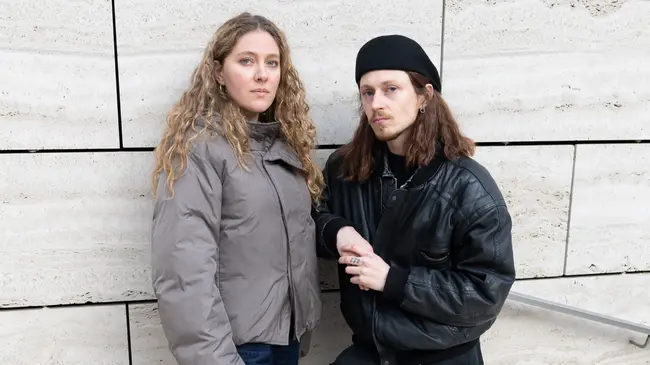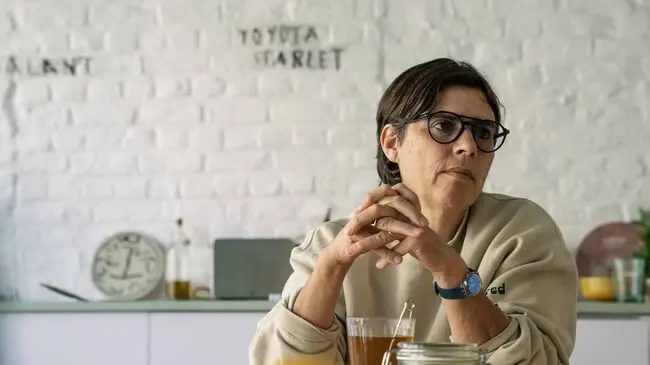The essence needs no ornament

An architect who is getting used to being called an artist walks into z33: a masterpiece by Francesca Torzo created with sensory precision. As we navigate the irregular passageways and discover the exhibition Lives of Forms, Shervin Sheikh Rezaei sheds her light on working with multiple layers of identities and sometimes getting rid of them.
Maybe we can enter this conversation the same way we entered the building. What was your first impression of z33?
The location, right next to an old beguinage, seems very appealing to me. I’m not a big fan of grand gates – I prefer the intimacy of a narrow alley as an entrance – so I quite like the delicate way in which you’re welcomed into z33 and how it reveals a surprising openness afterward. If I would actually build something someday, that’s what I would strive towards.


Because, to be clear, you’re not an architect who designs buildings that end up on a piece of land.
Exactly. On paper, I’m an architect, but lately, I feel myself leaning more towards fine art. Initially, I started my studies in architecture because of my interest in scenography which, honestly, I can still picture myself doing. My last work was in an old house where I felt comfortable enough to do a spatial intervention, but it had been a while since I did anything like that. Maybe that’s why I don’t consider myself a full architect: I haven’t built yet. I’ve been working for an architectural office (architecten de vylder vinck/de vylder vinck architecten) for the last two years and I’m looking forward to developing my own take on architecture again and looking at how to implement this in my own artistic practice.
Architects will always perceive me as more of an artist and vice versa. I still struggle to refer to myself as an ‘artist’. Not because I didn’t study fine art, but because it feels like a title one should earn through experience.


In the exhibition Lives of Forms, artist Kamrooz Aram applies a lot of ornaments to stress how they were considered inferior within our Eurocentric history of art. You don’t shy away from referring to your Iranian heritage. How do you relate to ornaments within your work?
Ornaments are very central to my family’s culture. My grandmother’s place was stuffed with decadent shapes, frills were everywhere. When I was younger I loved to get all dolled up in different colors and patterns, until my father pointed out that we already stood out. Something changed: I went looking for the essence of my style and ended up wearing mostly black clothing. In my work I also decided to remove all ornaments and opt for a more modernist approach, functional and dry.

Maybe your way of working is similar to Iman Issa’s tendency to strip her sculptures of any kind of detail or information.
I strongly value how she allows the viewer to give meaning to her works and to centralize their individual experience. It might be a leftover from my experience of living with multiple layers of identity. ENSEMBLE, the work I graduated with, was also a plan stripped off of its ornaments, but it still referred to both Western and Middle Eastern architectural structures which were widely known. I wanted to create a type of transcultural architecture that could be filled in by the other.


A lot of artists’ works are interpreted through their biographies and identities. Can your work be undone from your Iranian background?
When I made my book I felt like it was a good moment to create awareness surrounding my ambiguous sense of identity. However, I don’t want to be constantly reminded of it. I was just as influenced by the Russian deconstructivists as by my Middle Eastern heritage.


Kamrooz Aram made big changes to the exhibition space of z33 by painting the walls in bright colors and playing with our expectations of a curated presentation. You moved away from the white space by making an in-situ drawing in a very dated building. What was that like?
It was so much more about how my body related to that space, how it was limited by the space. When it got too cold, I had to take a break. When the sun came through, I’d start again. There’s no need to even explain the work because people can tell you’ve lived in this space under its own unique conditions. There’s nothing quite like that if you ask me.
Different Class works with the interest of their community at heart.
Our work’s purpose is to foster a solid network for independent artists, those who love them, and those who want to support them. Become a member to contribute to the local Belgian art scene.




